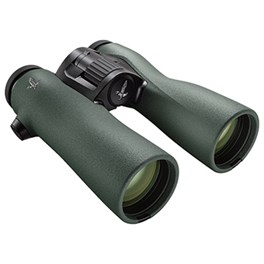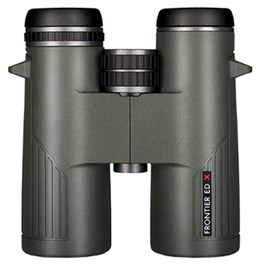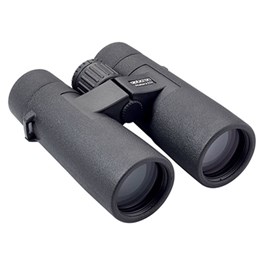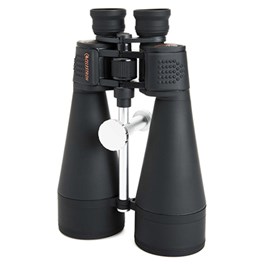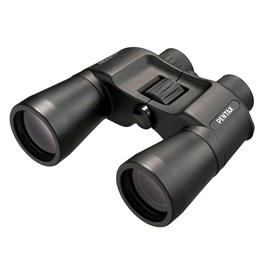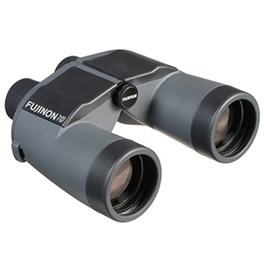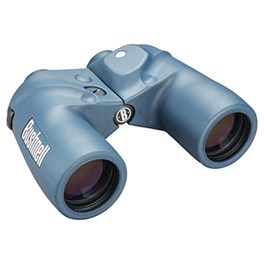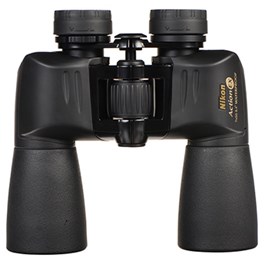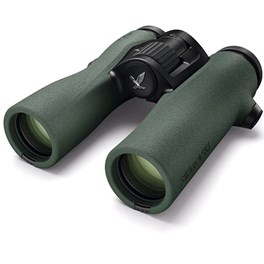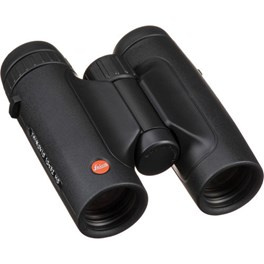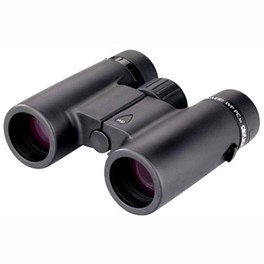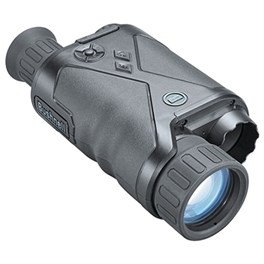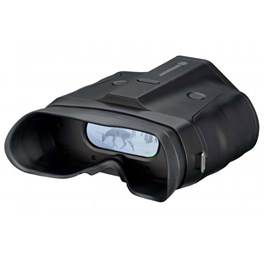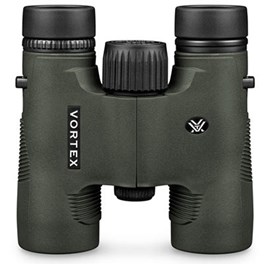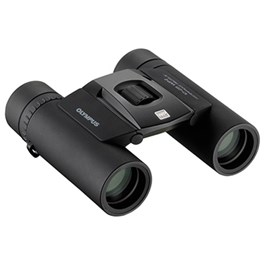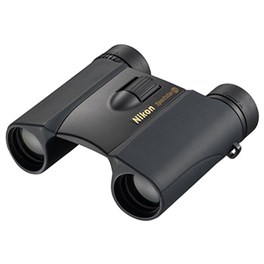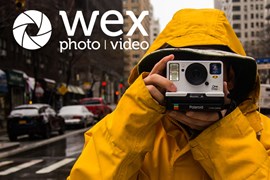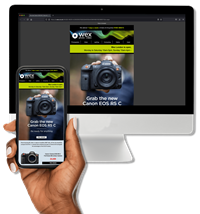
There are many things to consider when deciding which pair of binoculars are best for you. One pair can be great for one person and vastly different for another. More often than not, it comes down to what you want to use them for. Binocular designs vary and depending on the intended type of viewing, they will be aimed at different types of users.
Do you want birdwatching binoculars or are you wanting a lightweight, compact pair to take on a family holiday? Are they just for you or will you be sharing them around? There are pros and cons to almost any pair of binoculars, and we hope that this comprehensive guide will help you with that all-important decision.
Are you wondering just how binoculars work? Well, you can head on over to our detailed piece on all things binoculars; what the numbers mean, how they function, prisms and all the technical jargon. Check it out here!
Quick Navigation
Best Bird Watching Binoculars
There are many, many, many different types of binoculars but first things first - you have to decide what you’re using them for. For birdwatching, you need to decide whether you need reach or the ability to scan and pan along the skies. Fortunately, we offer both options. The higher magnification binos allow you to pick out the fine details of your subjects. The lower magnification, lighter etc. binoculars allow you to acquire your subject and track them through the sky.
Swarovski NL Pure 8x42 Binoculars
Hurry, limited stock!
Swarovski's NL Pure Binoculars are designed to provide the best possible image for long-distance viewing. Swarovski has developed these binoculars so that they can offer one of the widest fields of view on the market. With the use of field flattener lenses, you'll experience edge-to-edge sharpness, incredible image definition and true-to-life images. Furthermore, specialised lens coatings have been added to ensure the maximum colour fidelity possible with accurate colour rendering with high light transmission. A new focusing mechanism has been incorporated into the build which not only makes for much smoother focusing but also has been redesigned to make for a more compact and ergonomic pair of binoculars, perfect for all-day-use. The NL Pure range truly highlights Swarovski's mastery of professional optics.
£2,720.00 View
Pros:
- Offers an exceptionally wide field of view
- Premium optics and craftsmanship provide unparalleled quality
Cons:
- A very expensive pair of binoculars (but worth every penny)
- Great for scanning large areas but not built for observing fine details
This is an exceptional pair of binoculars. Swarovski is a name synonymous with optical excellence, and the NL Pure 8x42 Binoculars live up to that rep. Offering an extremely impressive 69-degree field of view, the NL Pure Binoculars use pin-sharp lenses that have been treated with specialised coatings. The result is superior light transmission and top-notch subject definition.
The binoculars are fog-proof, with 18mm eye relief for comfortable prolonged use. A new focusing mechanism makes the focusing action smooth and intuitive. It’s light but not too light – perfectly judged for use in the field. For spotting birds, these are some of the best binoculars you can buy, the wide field of view and fast focusing giving you exceptional flexibility. The build quality feels as premium as you’d expect, and the binoculars come with a clutch of useful accessories, including a comfort strap, a carry bag and a kit for cleaning.
Pros:
- Nitrogen Purged meaning they’re waterproof and fog-proof
- Affordable and comes with Hawke’s lifetime warranty!
Cons:
- Not as ergonomic and tactile as other pairs
For a much more affordable birding option, we’d recommend this pair of capable binoculars from Hawke. Delivering high-quality viewing thanks to a set of precision optics, the Hawke Frontier ED X 10x42 binoculars use extra-low dispersion optics to minimise chromatic aberration. The lenses have also been treated with water-repellent coatings, protecting them from rainfall, and inside the binoculars have been nitrogen-purged as an anti-fogging measure.
With a 42mm objective lens, the Hawke Frontiers offer very good light transmission, and produce a sparklingly clear image. The chassis of the binoculars is constructed from magnesium alloy – it may not quite have the premium feel of a pair like the Svarovskis, but well, that’s why you’re paying a fifth of the price. Something we also especially like about these binoculars is the lifetime warranty Hawke offers. In the event of any damage or defect to the product, you’re covered, and set up for a lifetime’s happy birdwatching.
Opticron Natura BGA ED 8x42 Binoculars
Featuring wide field optics, ED glass objectives for brighter, sharper images, and a micro hinge body for even better grip, the Opticron Natura BGA ED delivers benchmark quality, optical performance and ergonomics for its price point. The optical system has high-quality phase-corrected prism units with Oasis prism coating, to deliver +99% light transmission over a broader spectrum.
£349.00 View
Pros:
- Compact and lightweight with a textured rubber armour
- Long eye relief eyepieces giving the full field of view for glasses wearers
Cons:
- Accessories are limited and some may find the included strap not robust enough
For an even more affordable pair of binoculars than the Hawke, consider the Opticron Natura BGA ED 8x42. While they offer 8x magnification rather than 10x on the Hawke, they still have a 42mm objective lens for excellent light transmission. The focus here is on a portable build – weighing 648g, the Opticron Natura BGA ED 8x42 binoculars use a lightweight roof prism design with a micro hinge body.
The prism units themselves have been phase-corrected and treated with Oasis prism coating, which ensures optimal light transmission and excellent clarity. The body of the binoculars is outfitted with rubber armour, making them durable without adding to the weight too much. The generous eye relief of 23mm also makes them suitable for glasses-wearers.
For birding excursions, these binoculars make for the perfect companion. They’re light, they’re affordable and they produce a clear, sharp image. It’s hard to ask for more than that!
Best Astronomy Binoculars
It’s dark at night and because of that, when looking for suitable astronomy binoculars, you should look for a pair with large objective lenses. This will let the most amount of light in to help you view the stars! A larger objective lens will make the overall size and weight larger but for this, you can get accessories to mount them to a tripod for a steady, shake-free shot.
Celestron SkyMaster 20x80 Binoculars
Celestron's SkyMaster series of large aperture binoculars are phenomenal value for high performance binoculars, and ideal for astronomical or terrestrial use, especially over long distances. Each SkyMaster model features high quality BAK-4 prisms and multi-coated optics for enhanced contrast. Celestron has designed and engineered the larger SkyMaster models to meet the special demands of extended astronomical viewing sessions, large objective lenses, high magnification, in a reasonably lightweight configuration.
£169.00 View
Pros:
- Very affordable and ideal for those starting out with star gazing
- 80mm objective lens offers maximum image brightness in low-light
Cons:
- While perfect for beginners, its image quality may not be suitable for more seasoned users
With 20x magnification and a big 80mm objective lens, these are serious binoculars for seeing the stars – and even better, they’re much more affordable than you might expect. Celestron is probably best known for its stargazing telescopes, so the makers of this pair of binoculars know what they’re about when it comes to stargazing.
The view is pleasingly sharp from edge to edge, with multi-coated optics to ensure optimal clarity. Once again, the outer covering is rubber, making it both extra-grippy and able to take a bit of a knock. The focusing action is reasonably smooth, controlled by a large central knob, and once again there’s a lifetime limited warranty for a bit of extra peace of mind.
We also like the long eye relief of the Celestron SkyMaster 20x80 Binoculars, which makes them suitable for use while wearing glasses. There’s a tripod adapter too, which can be handy for prolonged viewing.
Pentax Jupiter 16x50 Binoculars
Observe bright and high-fidelity images with the Pentax Jupiter 16x50 Binoculars. Equipped with 50 mm objective lenses, these binoculars are perfect for scouting distant subjects and rare moments of action. Plus, a protective rubberised armoury safeguards these binoculars against accidental impacts while providing a comfortable grip.
£99.00 View
Pros:
- Affordable and versatile - along with astronomy, they’re ideal for safaris, hiking, trips and more
- Surprisingly lightweight meaning you can hold the binos for longer without fatigue
Cons:
- This pair offers an impressively far optical range, but as a result, the image quality can suffer in certain lighting situations
Even cheaper than the Celestron pair, the Pentax Jupiter 16x50 Binoculars are the perfect starter pair for the amateur stargazer. They deliver 16x magnification and sport a 50mm objective lens, which is smaller than the 80mm on the Celestron, but still still pretty good when it comes to light gathering.
The optical design uses a porro prism element, which works differently to a roof prism, using pairs of right-angled triangle prism that reflect light at 90° in order to suppress dispersion. You can spot porro prism binoculars by the way the eyepiece doesn’t line up with the objective lenses at the front.
Once again, the Pentax binoculars have a level of rubber armour to protect against bumps and knocks. The chassis is made from plastic, and certainly doesn't feel as premium as more expensive binos. However, they still offer tremendous value for money for any amateur stargazer.
Best Marine Binoculars
If you’re looking for binoculars for marine observation, there are several factors to be considered. An absolute must is a pair that have gas-filled tubes - this will ensure that the lenses do not fog up and will be waterproof! You should also be on the lookout for corrosion/temperature resistant polycarbonate - it’s lightweight, durable, and will withstand saltwater environments.
Fujinon 7x50 WP-XL Mariner Binoculars
The Fujinon 7x50 WP-XL Mariner Binoculars are an explorer’s choice. With built-in Porro prism, this pair of binoculars ensure better image quality and a wide field of view. The Fujinon binoculars have a 7.5° angle of view, making them perfect to be used by marine professionals and enthusiasts. Their 56-72 mm range of interpupillary distance makes sure that there is no dark halo around the image when the user is looking through the binoculars. An individual focus mechanism and dioptre adjustment are included in the Mariner binoculars to re-adjust the focus and make them suitable for users with eyesight differences. These binoculars with an 18 mm eye relief are designed to keep well care of the users with eyewear glasses. Apart from the safety of the users, the Fujinon binoculars take care of the lenses with the tethered push-on objective lens caps. Also, users can keep the binoculars clean with the cleaning cloth that comes along.
£270.00 View
Pros:
- Water and fog-proof built, and its 7x mag. is ideal for marine observation
- Tethered objective lens caps keep the lenses protected from dust, dirt, scratches, and breaks
Cons:
- They will float on water if the neckstrap is attached properly - but without the strap, they’ll sink!
These hardy waterproof binoculars are tailor-made for marine viewing, and offer a number of clever features that make them excellent value for money. For one, they not only provide excellent clarity of image thanks to multi-coated optics, but also have individual focus mechanisms for each lens, which can be useful for those who have pronounced differences between their eyes. This is accomplished via the dioptre ring.
With eye relief of 18mm, these binos are well suited to anyone who wears glasses. They also come with a number of useful accessories, including a strap that also acts as a flotation device, a light polycarbonate case for safe transportation, and a cleaning cloth to keep the lenses free from dust and dirt. Thanks to their wide angle of view and excellent light transmission, the Fujinon 7x50 WP-XL Mariner Binoculars make for splendid underwater viewing.
Bushnell Marine 7x50 Bearing & Ranging Binoculars
Specifically designed for sailors and marine experts, the Bushnell Marine 7 x 50 Bearing and Ranging Binoculars is an ideal choice for observing distant islands, marine life, water bodies, etc. Equipped with 7x magnification power, the ultra-compact binoculars deliver clear and high-resolution visuals while observing distant subjects. Additionally, the binoculars have innovative BaK Porro prisms that gather maximum light for delivering brighter images, even when the light is not adequate. With sealed O-ring and nitrogen filled tubes, the smart binoculars effectively eliminate fog or moisture formation and feature high resistance against saltwater corrosion. Incorporating an internal rangefinder, the intelligently designed binoculars allow calculating the distance between a user and the target. While an illuminated compass helps in measuring the height of distant objects. And with the rubber armouring on the exterior, the binoculars remain protected against shocks and bumps.
£329.00 View
Pros:
- Its Porro prism design is built with premium optics and provides accurate depth perception - ideal for marine use
- Nitrogen-filled tubes prevent fog or moisture formation on the lenses that would damage the optics
Cons:
- The batteries installation can be tricky (but it’ll be worth it)
Batteries on a pair of binoculars? It might seem odd, but it’s because the Bushnell Marine 7x50 Bearing & Ranging Binoculars have a built-in illuminated compass, which can be a godsend for navigation in the dark, particularly if you plan to take them out sailing. Also incorporated is a rangefinder that’s intended for measuring the distance and size of objects. All this is wrapped in a hardy rubberised shell that can take a knock or two, with an anti-slip design that reduces the risk of droppage.
This is another porro prism design (the non-aligned eyepieces and lenses are the giveaway), and it reliably produces a bright and clear image. The binoculars include nitrogen-filled tubes that are an effective anti-fogging mechanism, and the waterproofing is assured thanks to the O-ring sealed design. These are popular binoculars in the marine and sailing community, and it’s easy to see why.
Nikon Action EX 7x50 Binoculars
Nikon Action EX 7x50 Binoculars. The newest ATB offering from Nikon is modeled from the best selling Action series roof prism binocular. Like all ATB's, the Action EX is nitrogen filled and o-ring sealed for years of waterproof, fogproof and shockproof performance. A truly extreme and rugged binocular, the Action EX is built on an all-metal chassis with all optical components installed in a lightweight polycarbonate shell. The Eco-Glass lens system provides bright and tremendously clear images, while the streamlined body is rubber coated for a non-slip grip wet or dry.
£179.00 View
Pros:
- This pair will excel for marine use but can easily be used for most purposes
- An ergonomic design that’s also waterproof, fog proof and shockproof
Cons:
- Do not perform as well in low light as other binoculars, but it’s a small trade-off considering the price and overall performance
Anyone who’s regularly spending time on the Wex site is probably already aware of Nikon’s reputation for optical excellence, and these action binoculars do not disappoint. The Nikon Action EX 7x50 Binoculars aren’t just marine binoculars – they’re basically everything-binoculars. So, not only do you get waterproofing, but also a shockproof body, an all-metal chassis, a polycarbonate shell and a rubberised non-slip grip.
Image-wise, the binoculars excel. With high-resolution lenses that are made using Nikon’s proprietary Eco Glass, they incorporate anti-reflective coatings for optimal light transmission. There’s also a unique click-stop eyecup design that allows the user to adjust the eye relief according to their specific comfort level. It’s clever touches like these that make Nikon’s binoculars special, and the Nikon Action EX 7x50 Binoculars are just that. Suitable for all conditions and all terrains, these are binoculars to take everywhere with you.
Best Safari Binoculars
More often than not, if you’re on a safari, you’ll be far away from your subjects (elephants, zebra, and more scarily - lions). Because of this, you’ll need a high magnification with a large objective lens to bring those subjects closer to you but also to produce a bright and highly detailed image. But if there’s not enough space in your bag, a compact pair of roof prism binos could be useful to help you scan the skies or identify landmarks.
Swarovski NL Pure 8x32 Binoculars - Green
Swarovski's NL Pure Binoculars are designed to provide the best possible image for long-distance viewing. Swarovski has developed these binoculars so that they can offer one of the widest fields of view on the market. With the use of field flattener lenses, you'll experience edge-to-edge sharpness, incredible image definition and true-to-life images. Furthermore, specialised lens coatings have been added to ensure the maximum colour fidelity possible with accurate colour rendering with high light transmission. To further enhance smooth and hassle-free operation, an upgraded focusing mechanism has been implemented into the build. This allows for a more compact, well-balanced, and lightweight form-factor - ideal for every day, all-day usage. You also have the choice between Green and Burnt Orange colour variations to suit your individual style. The NL Pure range truly highlights Swarovski's mastery of professional optics.
£2,280.00 View
Pros:
- Exceptional image quality and overall performance
- This pair has an extended field of view that makes a substantial difference when viewing from a distance
Cons:
- Expensive compared to similarly ranged binoculars, but when on a safari, this pair will offer the best optical clarity
Another premium pair of exceptional optics from Swarovski, the NL Pure 8x32 Binoculars will naturally not be for everyone. However, those willing to take the plunge will be rewarded with some of the best long-distance viewing on the market, with simply superb quality. Ideal for safari, these binoculars use field flattener lenses to deliver an ultra-sharp image from edge to edge, even with an exceptionally wide field of view. In terms of sheer optical sharpness, these binos can’t be beat.
Balancing beautifully in the hand, the Swarovski NL Pure 8x32 Binoculars are comfortable to use for long periods. Focusing is smooth and natural-feeling, with a tactile focus ring that’s also suitable for use while wearing gloves (safaris aren’t always done in hot weather!). For cleaning, the binoculars come with a soap and brush kit, and there’s a useful side-bag for easy transportation.
Leica Trinovid 10x32 HD Binoculars
The Leica Trinovid 10x32 HDs are a rugged pair of binoculars that balance high-end optical performance with impressive portability. They feature P40 phase-correction prism coatings to enhance light transmission, the ever-reliable HighLux system to limit internal light diffraction, and Leica's effective HDC coating to ensure high-contrast clarity and colour fidelity throughout. You are given a truly immersive observational experience when you raise these binoculars to your eyes, with a clear, crisp, and wide 61° apparent angle of view. They also cater well to both those with or without eyewear, with twist-up four-position click-stop rubber eyecups, 16mm eye relief, and ±4 right-eye dioptric correction. For subjects that stand, sit, or fly a little closer to the lens - these Trinovid's are equipped with an immensely short 1m minimum focal distance. This is great for observing small birds, butterflies, bugs, and other insects.
£819.00 View
Pros:
- Exceptional Leica-standard image quality, colour accuracy and high-contrast clarity
- Nitrogen-filled and O-ring sealed; withstanding submersion in up to 4m of water and resistant to internal fogging
Cons:
- Another expensive pair but a worthy and reliable investment that will never fail
Here’s another name that any photographer worth their salt will know means exceptional optical quality – Leica. Don’t worry though; these optics won’t set you back as much money as a Leica M11. The Leica Trinovid 10x32 HD Binoculars are ideal for safari use, balancing portability, optical quality and hard-wearing design. The internal optics are phase-corrected and multi-coated, with anti-reflective and anti-abrasive treatments – the end result is outstanding light transmission and sharpness. Interestingly, the close focusing distance is an unusually short 1m, which is great if you want to get a close-up view of something that has landed close, like a bird or an insect. For far-off viewing, meanwhile, the binoculars deliver a 104m field of view at distances of 914.4m.
The eyecups are click-stop adjustable, which is great for glasses wearers, and the focusing action is tactile and smooth. Internal nitrogen also prevents fogging. The Leica Trinovid 10x32 HD Binoculars weigh just 640g and come with a useful protective nylon case for transportation.
Opticron Discovery WP PC 8x32 Roof Prism Binoculars
Save £20, RRP £169
The Opticron Discovery WP PC 8x32 Binoculars are ultra-compact and fully waterproof. With a host of features including 7.5° WA eyepieces, fully coated optics with PC phase corrected prisms, long eyerelief for spectacle wearers with twist type eyecups and excellent close focus ability, the Opticron Discovery WP PC 8x32 Binoculars offer the value conscious customer a stylish user friendly field glass.
£149.00 View
Pros:
- Affordable and perfect for those who are new to binoculars and who want a decent pair to get started
- Long eye relief for spectacle wearers with twist-type eyecups and excellent close focus ability
Cons:
- While an excellent pair for beginners, the optical quality may not meet the demands of seasoned users
For a much cheaper safari companion than either the Leica or the Swarovski, consider the Opticron Discovery WP PC 8x32 Roof Prism Binoculars. These are simple but stylish binoculars, providing 8x magnification with a 32mm objective lens. Thanks to the phase-corrected prisms, the optical clarity is generally very good, and the fact that the binoculars weigh just 391g makes them both portable and comfortable to use for extended periods.
These are roof prism style binoculars, and like the Leicas, they have a short minimum focus distance of just 1m. At 1000m distance, they’ll give you a field of view of 131m, which should be plenty for spotting wildlife while on safari. The included accessories are also very useful – as well as a soft case, there’s also a handy rain guard (though the binoculars are waterproof, don’t worry), as well as a lanyard and lens caps.
Best Night Vision Binoculars
The days of night vision binoculars being exclusively a spy’s tool are gone. Nowadays we have various options available to us that allow us to make nighttime observations. We can enjoy watching wildlife at night - seeing what they get up when the sun goes down and light from our lamps go out. Not only this, the once costly and bulky night vision binoculars of the past are now, compact, lightweight and offer a much higher quality image.
Bushnell Equinox Z2 4.5x40 Night Vision Monocular
The Bushnell® Equinox Z2 night vision monocular enables you to see targets more than 750 ft away day or night with a power built-in IR illuminator. Stream live video to you mobile device and control zoom, video recording, image capture, and IR brightness directly from your mobile device
£409.00 View
Pros:
- It can capture high-quality 1080p video during both day and night
- Its built-in IR illuminator allows for viewing long-range targets day or night
Cons:
- The illuminator has only two brightness levels and the battery life isn’t as good as some other models
First things first – yes, this is not technically a pair of binoculars, it’s a monocular. However, the Bushnell Equinox Z2 4.5x40 Night Vision Monocular is a highly capable device for seeing in the dark, and is well worth considering, especially if you want something lightweight and portable. The powerful built-in IR illuminator works at ranges of up to 750ft (about 229m), giving you a good deal of range, and the body is well-built with a useful grip.
The Bushnell Equinox Z2 4.5x40 Night Vision Monocular records video in 1080p, and is capable of streaming it directly to a mobile device. This makes it easy to share your night-time discoveries, which you can also record as still images if so desired. One thing to keep an eye on though is the battery life; the Bushnell Equinox Z2 4.5x40 Night Vision Monocular runs on four AAs, and they can run down quite quickly if you’re not paying attention. If you’re planning on using it a lot, consider picking up some rechargeables.
Bresser Digital Night Vision 3x20 Binoculars
Expand your horizon with the Digital Night Vision 3x20 Binoculars. With a 4:3 digital display, users benefit from a comfortable viewing experience that brings their subjects closer using 3x magnification. This device also boasts 6 hours of power with the included AA batteries, integrated infrared lighting for use in the dark and a 20mm lens diameter with an adjustment wheel for optimal focus.
£149.00 View
Pros:
- It has a large 4:3 display that is comfortable for longer periods of use
- Impressive image quality, even in pitch black, considering the affordable price point
Cons:
- The battery life isn’t amazing but to be expected. It's always a good idea to carry extra
These powerful binoculars with integrated IR lighting offer an impressively sharp and clear level of image quality in the dark – even, in fact, when it’s absolutely pitch black. The Bresser Digital Night Vision 3x20 Binoculars use a 4:3 display to show the image, which is comfortable to use for long periods, and offer 3x-6x magnification levels with a 100m detection range. We also like the padded strap that’s included, which makes them comfortable to use for extended viewing sessions.
Once again, you do need to keep an eye on the batteries – the binoculars are powered by six AAs, which is good for about six hours of viewing. Again, rechargeables are a good idea for cost-saving in the long run. They do come with six batteries in the box though, so the good news is, you have everything you need to get started right away.
Best Sports Binoculars
There are many cases where a pair of binoculars can improve your enjoyment of a sporting event. But as you’ll learn throughout this buying guide, there are many different types of binos that suit differing subjects - sports binoculars are no different. However, if you were to try and pin down an-rounder pair, you’d be looking at 8x42, or a 10x25, for something more portable.
Vortex Diamondback HD 10x28 Compact Binoculars
The Vortex Diamondback HD 10x28 Compact Binoculars welcomes the addition of HD glass elements whilst retaining all of the great improvements made in the last update. This includes better optics, dielectric prism coatings and a 10% lighter body. The HD glass brings outstanding resolution; reduced chromatic aberration; stunning colour fidelity; edge-to-edge sharpness, and fantastic light transmission to an already impressive binocular range.
£169.00 View
Pros:
- Premium High-Density extra-low dispersion glass delivers impressive resolution and colour fidelity
- Lightweight, compact and affordable!
Cons:
- While its lightweight, compactness is a plus; it’s at the detriment of a more premium feeling casing
For viewing sports in crisp, perfect detail, the Vortex Diamondback HD 10x28 Compact Binoculars are an ideal choice. High-end optics are the name of the game here – with premium, high-density, extra low dispersion glass, they produce an image of enviable sharpness and clarity. Magnification goes up to 10x, and all lenses have been treated with anti-reflective coatings to optimise light transmission. On the exterior of the lenses, ArmorTek treating is there to help prevent damage via scratches, splashes, etc.
These are also comfortable binoculars to use, with multi-position eyecups and an adjustable right-eye dioptre that allows the user to account for differences between their eyes. The binoculars can be mounted on a tripod, and are O-ring sealed to guard against dust, debris and moisture. Whatever sports you plan to view, the Vortex Diamondback HD 10x28 Compact Binoculars are an elegant, lightweight companion that will improve the experience.
Olympus Sports 10x25 WP II Binoculars - Black
Designed for the sports fan, the Olympus 10x25 WP II waterproof binoculars are a great addition to your kit enabling you to get closer to the action whether you are on the terraces cheering on your team or at trackside following the action. The waterproof design means that these binoculars are equally at home on land or sea and the convenient focusing means you won't miss a thing from the starting gun to the final flag. Whilst these binoculars have been designed with the sports fan in mind they perform equally well in the countryside when viewing nature's athletes.
£119.99 View
Pros:
- The ideal pair for packing away and quickly viewing at a moment's notice
- Waterproof, travel-friendly and should work for all users
Cons:
- They don’t offer a huge field of view but are perfect for sporting events
These binoculars by Olympus, as the name implies, are expressly designed for viewing sports. As such, they don’t provide an especially wide field of view – because the makers are banking on the assumption that you don’t need one. What they do deliver is premium sharpness and clarity from high-end, multi-coated optics, as well as fast focusing that helps you keep up with the action.
The Olympus Sports 10x25 WP II Binoculars are waterproof, as well as being nicely compact and portable, meaning they should be suitable for just about any viewing position and conditions. Focusing is achieved via the central knob; it’s nicely tactile and intuitive, and you should get the hang of it in no time. Whether you’re viewing track sports, field games, watersports, airshows or whatever else, the Olympus Sports 10x25 WP II Binoculars will prove an able and convenient companion.
Nikon Sportstar EX 10x25 Binoculars
Combining superb optical quality and durability, the Nikon Sportstar EX 10x25 Binoculars provide exceptional performance for watching birds, sports, or just for appreciating the great outdoors. They offer a 10x magnification, while the multilayer-coated 25mm objective lenses ensure the viewed image is bright and clear. The turn and slide rubber eyecups with multi-click allow easy positioning of eyes and comfortable viewing even for eyeglass wearers at the proper eyepoint. O-ring seals and nitrogen gas provide added resistance to the effects of changes in climate for added peace of mind.
£99.99 View
Pros:
- Waterproof (up to 2 m for 5 minutes) and fog-free with O-ring seals and nitrogen gas
- Lightweight, compact and will easily fit in any bag
Cons:
- They do not have the best optical quality but are more than adequate for casual viewing
Just as it sounds, Nikon’s Sportstar EX 10x25 Binoculars are perfectly pitched for sports viewing of all varieties. A 10x magnification is about right for most sports viewing, and the objective lens diameter of 25mm lets a decent amount of light in. Once again, the optics are well-treated, with multilayer coatings for a sharp and accurate image. Nikon’s proprietary Eco Glass makes another welcome appearance, assuring the user that all elements are free from lead and arsenic.
These waterproof binoculars are comfortable to use, with multi-click adjustable eyecups that can be altered to suit eyeglass wearers if needed. The binoculars are slim in profile, with a stylish look and twin-hinged foldable design. O-ring seals ensure that water is kept out, while nitrogen purging means that sudden changes in temperature don’t cause fogging. All in all, this affordable pair of binos delivers just the kind of performance an avid sports fan desires.

FAQs
What do the numbers on binoculars mean?
The first number indicates the magnification or strength and the second is the objective lens diameter. The second figure refers to the diameter of the objective lens in millimetres
Can I wear glasses with a pair of binoculars?
You can wear glasses and use binoculars but you’ll need longer eye relief to allow room for your glasses.
What’s the difference between BAK4 and BK-7 prisms?
These two types are made from different materials that offer different optical qualities. BaK4 offers the highest level of optical quality, whereas BK-7 prisms offer a high image quality but do not perform as well in lower light conditions.
What strength of binoculars is best?
This is all very much dependent on the subject you wish to observe. A lower magnification pair will be lighter and more portable but will not offer an image as zoomed in as a pair with higher magnification. But for everyday users, a lower magnification will be easier to use and pack away in your bag.
Check out our other expert buying guides...
How do we decide?
Our in-house photography experts, store staff and partners all work collaboratively to pour over these guides. The cameras and equipment recommended in our guides are based on their personal opinion, empirical experience and of course, feedback from our customers.
We way up price, features, quality and the all-important 'je ne sais quoi' to make sure we recommend products that will delight and inspire.
If you would like more advice on any purchase our contact centre staff are here to help. Alternatively, you can reach us via email or social media.
And don't forget. If you were to purchase anything based on our recommendations you'll be covered by our full returns policy
About the Author
Leo White has been a member of the Wex Photo Video team since 2018, working in a variety of roles ranging from the contact centre to the product setup team. With both a photography BA and MA, Leo has a wealth of knowledge he's ready to share. See more of his writing on Leo's author page.

